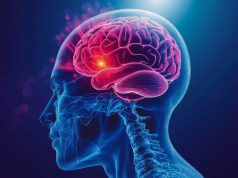Some stroke patients less likely to get rehabilitation services due to patient, hospital variables
WEDNESDAY, May 15, 2019 (HealthDay News) — There is considerable variation in the use of rehabilitation services in the acute care setting following ischemic stroke, according to a study published in the May issue of Physical Therapy.
Amit Kumar, Ph.D., from Northern Arizona University in Flagstaff, and colleagues examined patient and hospital sources of variation in acute care rehabilitation services provided after stroke using Medicare claims data linked to the Provider of Services file.
The researchers found that of 104,295 patients, 85.2 percent received rehabilitation. Of those, 61.5 percent received both physical therapy and occupational therapy, 22.0 percent received physical therapy only, and 1.7 percent received occupational therapy only. On average, patients received 123 therapy minutes during an average hospital stay of 4.8 days. Variables associated with lower odds of receiving any rehabilitation services, as well as fewer minutes of therapy, included being a male patient, being dually enrolled in Medicare and Medicaid, prior hospitalization, intensive care unit stay, and having a feeding tube. More therapy minutes were received by patients treated by tissue plasminogen activator, those in limited and nonteaching hospitals, and those in hospitals with inpatient rehabilitation units.
“For stroke patients, rehabilitation services are one of the most important components in providing treatment after they are stabilized in the acute setting,” Kumar said in a statement. “It’s really important to start physical therapy and occupational therapy as early as possible.”
Copyright © 2019 HealthDay. All rights reserved.








